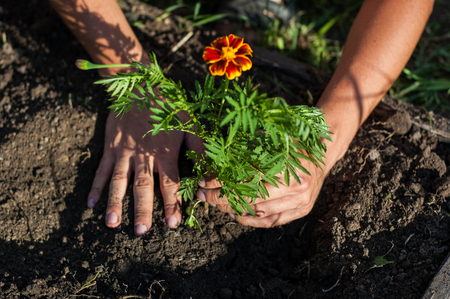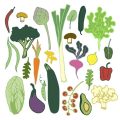Introduction to Hibiscus and Jasmine Farming in India
India, a land of vibrant traditions and lush landscapes, has a deep-rooted connection with floriculture, especially the cultivation of hibiscus and jasmine. These flowers are not merely ornamental; they hold immense cultural significance, gracing temples, weddings, and daily rituals across the nation. From the red hibiscus offered to Goddess Kali in Bengal to the fragrant jasmine strings adorning women’s hair in Tamil Nadu and Karnataka, these blooms are woven into the very fabric of Indian life. The economic value of hibiscus and jasmine farming is equally remarkable. Both flowers command steady demand in domestic markets for religious ceremonies, perfumes, garlands, and even natural remedies. Regions such as Tamil Nadu, Karnataka, Andhra Pradesh, West Bengal, and Maharashtra have emerged as major hubs for their cultivation due to favourable climates and centuries-old horticultural expertise. Recognising this socio-economic importance, the Government of India and various state agencies have introduced dedicated schemes and subsidies to encourage farmers to take up hibiscus and jasmine farming. By supporting this sector, these policies aim to uplift rural livelihoods, empower women entrepreneurs in floriculture, and boost India’s position as a global exporter of fresh flowers. In this article, we will delve into the various government initiatives that nurture hibiscus and jasmine cultivation and examine how these efforts are blossoming new opportunities for Indian farmers.
Central and State Government Schemes for Flower Farming
India’s vibrant floriculture sector, particularly in the cultivation of hibiscus and jasmine, is actively supported by a bouquet of government initiatives. Both the central and state governments have rolled out several schemes designed to empower farmers, improve production quality, and promote export potential. These schemes not only provide financial assistance but also offer technical guidance, infrastructure development, and market linkage opportunities, fostering a thriving environment for flower growers across the country.
Key Central Government Schemes
The Ministry of Agriculture & Farmers Welfare is at the heart of India’s policy framework for floriculture. Notable schemes include:
| Scheme Name | Main Features | Benefits for Hibiscus & Jasmine Growers |
|---|---|---|
| Mission for Integrated Development of Horticulture (MIDH) | Assistance for setting up nurseries, protected cultivation, post-harvest management | Subsidies for planting material, infrastructure support, technology adoption |
| National Horticulture Board (NHB) Schemes | Capital investment subsidy for hi-tech horticulture projects including floriculture | Up to 40% subsidy on eligible project cost; support for cold storage and processing units |
| Agricultural and Processed Food Products Export Development Authority (APEDA) | Export promotion, quality certification, market development | Support for export-oriented hibiscus and jasmine products; training and capacity building |
State-Level Initiatives: Regional Empowerment
Several states with significant floriculture activity—like Tamil Nadu, Karnataka, West Bengal, and Maharashtra—have tailored their own policies to nurture local flower farmers. For example:
- Tamil Nadu Horticulture Development Agency (TANHODA): Offers special incentives for jasmine cultivators through cluster-based approaches.
- Karnataka State Horticulture Mission: Focuses on micro-irrigation subsidies and high-quality planting material distribution to both hibiscus and jasmine growers.
- Maharashtra Floriculture Policy: Provides interest-free loans and input subsidies specifically targeting smallholder flower farmers.
Navigating Subsidy Opportunities: A Farmer’s Perspective
The combination of these central and state-level interventions means that Indian flower farmers can access a diverse range of supports—from direct financial incentives to advanced training in sustainable practices. By leveraging these schemes, hibiscus and jasmine growers gain improved access to markets (including Mandis and export channels), robust crop insurance options under PMFBY (Pradhan Mantri Fasal Bima Yojana), as well as targeted subsidies on inputs like seeds, fertilizers, and irrigation systems.
Cultural Relevance: Community Empowerment Through Floriculture
The government’s encouragement of floriculture is deeply rooted in India’s cultural fabric—where flowers like jasmine are woven into daily rituals, festivals like Pongal or Ugadi, and even entrepreneurial ventures led by women’s self-help groups. This synergy between policy support and cultural tradition ensures that the dreams of every hibiscus or jasmine farmer can blossom to their fullest potential amidst India’s ever-growing garden of opportunities.

3. Subsidies and Financial Assistance Programmes
For small and marginal farmers nurturing dreams of vibrant hibiscus and fragrant jasmine gardens, the Indian government has unfurled a tapestry of subsidies, grants, and financial incentives to encourage floriculture. Under the umbrella of the National Horticulture Mission (NHM), eligible farmers can access subsidies for planting material, drip irrigation systems, shade net houses, and even organic inputs. The government’s focus on inclusivity ensures that these benefits reach cultivators from all backgrounds—including women farmers and those from SC/ST communities—by providing higher subsidy rates in many cases.
Central and State-Level Support
The Ministry of Agriculture & Farmers Welfare, through its centrally sponsored schemes, offers up to 40-50% subsidy on key infrastructure like greenhouses and micro-irrigation systems. States such as Tamil Nadu, Karnataka, Andhra Pradesh, and West Bengal have their own tailored floriculture subsidy programmes that further sweeten the deal by supporting localised needs. Additionally, certain state horticulture departments provide free or low-cost saplings of hibiscus and jasmine, along with technical guidance from experts to ensure high yield and quality blooms.
Credit-Linked Subsidy Schemes
The National Bank for Agriculture and Rural Development (NABARD) facilitates credit-linked subsidies for constructing polyhouses or installing modern irrigation solutions. These initiatives are designed so that even the smallest farmer can avail loans at reduced interest rates, with a significant portion being reimbursed as a back-end subsidy after successful implementation. Special attention is given to cluster development projects where groups of flower growers band together for collective bargaining power and better market access.
Empowering Rural Florists Through Direct Benefit Transfer
With Direct Benefit Transfer (DBT) mechanisms now in place, funds from floriculture schemes are credited directly into farmers’ bank accounts—bringing transparency, speed, and dignity to the process. Whether you are cultivating hibiscus on a half-acre plot in Kerala or tending jasmine vines in the red soils of Madurai, these thoughtfully crafted financial aid programmes aim to transform your patch of earth into a blooming paradise while uplifting rural livelihoods across Bharat.
4. Application Process and Eligibility Criteria
For farmers seeking to blossom their hibiscus and jasmine ventures through government support, understanding the step-by-step application process is essential. The Indian government has streamlined procedures for various schemes and subsidies, ensuring transparency and easy access for rural growers. Below, we present a comprehensive guide tailored for aspiring floriculturists.
Step-by-Step Application Process
- Identify Relevant Scheme: Visit the official website of the Ministry of Agriculture & Farmers Welfare or your respective state horticulture department to select a suitable scheme, such as NHM (National Horticulture Mission) or MIDH (Mission for Integrated Development of Horticulture).
- Register as a Farmer: Ensure you are registered with your local Krishi Vigyan Kendra (KVK) or State Agriculture Department. Many states require an Aadhaar-linked farmer ID.
- Fill Out Application Form: Download or collect the scheme’s application form from the official portal or agriculture office. Complete all sections carefully, preferably in English or the regional language.
- Attach Required Documents: Gather and attach all necessary documents (see table below).
- Submit Application: Submit your filled form and documents at the nearest Block Agriculture Office, District Horticulture Office, or online if available.
- Verification & Inspection: Authorities may visit your farm for verification. Cooperate and provide accurate information regarding landholding and current cultivation practices.
- Approval & Disbursement: Once approved, subsidy amounts are usually credited directly to the applicants bank account via DBT (Direct Benefit Transfer).
Eligibility Criteria
- The applicant must be an Indian citizen engaged in agricultural activities.
- The land must be suitable for hibiscus/jasmine cultivation, with ownership or lease documentation.
- Certain schemes may prioritize small and marginal farmers, women farmers, and those from SC/ST categories.
- The applicant should not have availed similar benefits under other central/state schemes for the same purpose in the past three years.
Important Documentation Checklist
| Document | Description/Requirement |
|---|---|
| Aadhaar Card | Proof of identity and residency |
| Land Ownership/Lease Certificate | Legal proof of cultivable land |
| Bank Passbook Copy | For DBT subsidy transfer |
| Caste Certificate (if applicable) | Required for reserved category schemes |
| Photographs | Recent passport-sized photos of applicant and farm site |
| Duly Filled Application Form | Main scheme-specific form with signature/thumb impression |
| Panchayat/Local Body Certificate | If required by state guidelines |
Kisan Tip:
Always keep photocopies of submitted documents and note your application reference number for future tracking. Seek guidance from local agriculture extension officers or self-help groups (SHGs) if you face difficulties during any stage of the process. This careful preparation ensures your journey towards a fragrant garden livelihood is as smooth as a monsoon breeze!
5. Success Stories from Indian Hibiscus and Jasmine Farmers
Empowering Rural Communities through Government Support
Across India, the fragrance of success is blooming in the fields of hibiscus and jasmine, thanks to progressive government schemes and subsidies. Many farmers who once struggled with traditional crop cycles have now found a sustainable livelihood in floriculture. Through targeted initiatives such as the National Horticulture Mission (NHM) and state-level subsidy programs, cultivators receive essential support—ranging from high-quality saplings to drip irrigation kits—that has transformed their farming journey.
Case Study: Suresh Kumar from Tamil Nadu
Suresh Kumar, a small farmer from Madurai, leveraged the Tamil Nadu government’s Floriculture Development Scheme. With financial aid for polyhouse construction and organic fertilizers, he shifted to cultivating both hibiscus and jasmine on a larger scale. Today, his income has doubled, and he proudly supplies flowers to nearby temples and export markets. His story inspires neighbouring farmers to adopt similar best practices.
Women Empowerment in Karnataka
In rural Karnataka, women’s self-help groups have flourished by participating in Central Floriculture Schemes. By accessing training workshops organized under the Rashtriya Krishi Vikas Yojana (RKVY), these women mastered integrated pest management and value addition techniques like garland making. Their collective efforts have brought economic independence and strengthened community bonds—a true garden of hope nurtured by government support.
Best Practices Shared Across Regions
Farmers from Maharashtra to Andhra Pradesh highlight how timely subsidies for micro-irrigation and cold storage units reduce post-harvest losses and ensure better market prices. Many attribute their improved yields to agri-extension services promoted by the government, which encourage eco-friendly practices such as vermicomposting and intercropping with marigold or vegetables. These region-specific stories not only reflect resilience but also serve as blueprints for others seeking to blossom in floriculture.
A Blossoming Future Rooted in Inspiration
The journey of these hibiscus and jasmine cultivators is a testament to what is possible when local wisdom meets institutional support. Their success stories are more than just individual achievements—they are seeds of inspiration planted across India’s diverse landscapes, encouraging many more to embrace sustainable flower farming with confidence and pride.
6. Useful Contacts and Resources
For farmers seeking to benefit from government schemes and subsidies for hibiscus and jasmine cultivation in India, accessing the right contacts and resources is essential. Below is a curated list of important portals, helplines, and advisory services that provide guidance, application support, and up-to-date information tailored to the Indian context.
Government Portals
- Ministry of Agriculture & Farmers Welfare: agricoop.nic.in – Central portal for all major schemes, guidelines, and updates regarding horticulture crops including hibiscus and jasmine.
- National Horticulture Board (NHB): nhb.gov.in – Detailed information on subsidies, cold storage support, market linkages, and technical guides for flower farming.
- Pradhan Mantri Krishi Sinchai Yojana (PMKSY): pmksy.gov.in – Schemes related to irrigation and water conservation for better yield in flower farms.
State-Specific Departments
- Tamil Nadu Horticulture Department: tnhorticulture.tn.gov.in
- Karnataka State Department of Horticulture: horticulture.karnataka.gov.in
- Kerala Department of Agriculture Development & Farmers’ Welfare: keralaagriculture.gov.in
Agricultural Advisory Services & Helplines
- Kisan Call Centre (KCC): Dial 1800-180-1551 (Toll-free) – Multi-lingual agricultural advice available from 6 am to 10 pm daily.
- M-Kisan Portal: mkisan.gov.in – SMS-based query service for crop-specific advisories in local languages.
- Agricultural Technology Management Agency (ATMA): Contact your district ATMA office for on-ground support and scheme awareness.
Additional Resources for Hibiscus & Jasmine Growers
- Indian Institute of Horticultural Research (IIHR): iihr.res.in – Research updates, training programs, and cultivar recommendations.
- NABARD (National Bank for Agriculture & Rural Development): nabard.org – Subsidized loan schemes and financial advisory for floriculture projects.
- Agricultural Produce Market Committee (APMC) directories: Check your state APMC website for mandi contacts and real-time flower price updates.
The above contacts and resources are your stepping stones to navigate government schemes efficiently, stay updated with floriculture best practices, and connect with experts who understand the nuances of Indian farming culture. For region-specific guidance, always reach out to your local Krishi Vigyan Kendra (KVK) or nearest horticulture extension officer.

